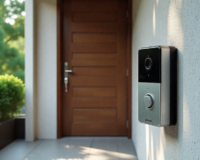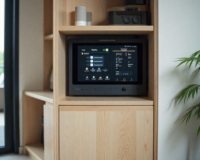As the chill of winter settles in, homeowners in Melbourne often find themselves facing a crucial decision: how to effectively heat their homes. Among the myriad options available, two prominent contenders stand out: Gas Ducted vs Reverse Cycle Heating. Each system offers its own set of advantages and considerations, making the choice between them a pivotal one for homeowners. In this comprehensive guide, we delve into the intricacies of both Reverse Cycle Heating and Gas Ducted Heating, providing an in-depth comparison to assist homeowners in making an informed decision tailored to their specific needs.
Read more: Choose The Right Heating and Cooling Systems for Melbourne’s Climate
Table of Contents
ToggleWhat is Reverse Cycle Heating?
Reverse Cycle Heating, also known as reverse cycle air conditioning, has emerged as a modern and versatile heating solution. This system utilizes heat pump technology to absorb heat from the outdoor environment and transfer it indoors, providing efficient heating during colder months. Unlike traditional heating systems, reverse cycle heating offers the added benefit of dual functionality, serving as both a heater and an air conditioner.
What is Gas Ducted Heating?
Gas Ducted Heating, on the other hand, represents a more traditional approach to home heating. This system relies on a gas furnace to generate heat, which is then distributed throughout the home via ductwork. Gas ducted heating has long been favored for its ability to provide centralized heating, offering consistent warmth throughout the entire home.
Comparing Gas Ducted vs Reverse Cycle Heating
Energy Efficiency
When evaluating heating systems, energy efficiency is a critical factor to consider. In this regard, reverse cycle heating holds a distinct advantage. With efficiency ratings ranging from 300% to 600%, reverse cycle systems can produce up to six times more heat energy than the electrical energy they consume. This impressive efficiency not only results in lower energy bills but also reduces environmental impact by minimizing greenhouse gas emissions.
Gas ducted heating, while still relatively efficient, falls short of the energy efficiency offered by reverse cycle heating. Gas heaters typically operate at around 50% energy efficiency, meaning a significant portion of the energy input is lost during the heating process. Additionally, gas ducted heating systems are susceptible to fluctuations in gas prices, which can impact overall operating costs.
Installation and Setup
The installation process for both reverse cycle heating and gas ducted heating requires careful consideration of various factors. Gas ducted heating systems often involve extensive ductwork installation, which can be costly and time-consuming. Homeowners must also ensure adequate ventilation and compliance with safety regulations when installing gas heating systems.
In contrast, reverse cycle heating systems offer greater flexibility and ease of installation. With no need for ductwork, these systems can be installed more quickly and with minimal disruption to the home. However, homeowners must still consider factors such as the size of the indoor and outdoor units, as well as zoning requirements for optimal heating control.
Cost Considerations
When it comes to upfront costs, gas ducted heating systems typically have a lower initial investment compared to reverse cycle heating systems. However, the long-term operating costs of gas heating systems may outweigh the initial savings, particularly as gas prices continue to rise. In contrast, while reverse cycle heating systems may have higher upfront costs, their superior energy efficiency often results in lower overall operating costs over time.
Additionally, homeowners should factor in potential rebates and incentives available for both heating systems. In Victoria, for example, the Home Heating and Cooling Upgrades program provides subsidies for the installation of energy-efficient heating systems, including reverse cycle heating.
Environmental Impact
In today’s environmentally conscious world, the environmental impact of heating systems is a significant consideration for many homeowners. Reverse cycle heating systems are widely regarded as the more environmentally friendly option, as they produce fewer greenhouse gas emissions compared to gas heating systems. By utilizing renewable energy sources such as solar power, reverse cycle heating can further reduce its carbon footprint, making it a sustainable choice for eco-conscious homeowners.
Gas ducted heating, while not inherently harmful to the environment, relies on the combustion of natural gas, which emits carbon dioxide and other pollutants into the atmosphere. As concerns about climate change continue to grow, many homeowners are opting for cleaner, greener heating alternatives like reverse cycle heating.
Comparing Similarities and Differences of Gas Ducted and Reverse Cycle Heating
Similarities
- Central Heating System: Both gas ducted heating and reverse cycle heating utilize a network of ducts to evenly distribute warmth throughout the entire property.
- Zoning Capabilities: Both systems offer the flexibility of zoning, enabling users to independently heat different areas of the property according to their requirements.
- Thermostats: Both gas ducted and reverse cycle systems come equipped with thermostats, allowing precise control over the desired indoor temperature.
- Outdoor Units: Both types of heating systems feature outdoor units, which play a crucial role in the operation and efficiency of the overall system.
Differences
- Heating vs. Heating and Cooling: Gas ducted heating is solely designed for heating purposes, whereas reverse cycle air conditioning offers the added benefit of both heating and cooling functionalities, making it a versatile year-round solution.
- Heating Method: Gas ducted systems rely on the combustion of LPG or natural gas to generate heat directly, while reverse cycle units utilize electrically powered heat pumps to transfer heat energy from one location to another.
- Energy Rating Requirements: Reverse cycle units, being electrical systems, are mandated to have an energy star rating label indicating their energy efficiency. Gas systems, on the other hand, may carry voluntary energy rating labels, with participation varying among manufacturers.
- Add-On Cooling Option: While gas heaters do not inherently offer cooling capabilities, it is possible to integrate add-on cooling functionality with the existing ductwork, utilizing the same ducts but requiring a separate controller and outdoor unit. This option allows for the provision of both heating and cooling within the same system.
Read more: Gas vs Electric Heating: Which is the Best Choice?
Advantages of Reverse Cycle Heating vs. Gas Ducted Heating
- Comprehensive Heating and Cooling: Reverse cycle air conditioning systems offer both heating and cooling functionalities in a single system, providing year-round comfort and versatility.
- Safety: Reverse cycle systems eliminate the risk of carbon monoxide poisoning associated with faulty gas systems, ensuring a safer indoor environment for occupants.
- Lower Maintenance: With fewer safety risks involved, reverse cycle systems generally require lower maintenance compared to gas systems, reducing long-term upkeep costs.
- Energy Efficiency: Reverse cycle units boast significantly higher energy efficiency, with some models achieving up to 600%, making them more cost-effective to operate compared to gas ducted units.
- Modern Features: Reverse cycle systems often come equipped with additional modern features such as air purification technology, dehumidifiers, and inverters, enhancing indoor air quality and comfort levels.
- Environmental Friendliness: Reverse cycle heating produces approximately two-thirds less greenhouse gas emissions than gas systems, making them a more environmentally friendly option.
- Noise Levels: Reverse cycle systems operate quietly, especially compared to older gas ducted heaters, providing a quieter and more comfortable indoor environment.
Advantages of Gas Ducted Heating vs. Reverse Cycle Heating
- Rapid Heating: Gas ducted heaters offer faster heating of properties compared to reverse cycle air conditioners, ideal for quickly warming up indoor spaces during colder weather conditions.
- Efficiency in Cold Climates: Gas heaters demonstrate greater efficiency, particularly in extremely cold climates, where they can provide consistent and reliable heating performance.
- Comfort Preference: Many individuals prefer the gentle and comforting heat provided by gas heating systems, considering it to be more soothing and cozy compared to the heat generated by reverse cycle units.
Exploring Split Systems as an Alternative Heating Solution
In scenarios where traditional ducted heating systems are impractical or unavailable, split systems emerge as a popular and effective alternative for heating and cooling individual rooms or spaces. Particularly prevalent in areas like Mooroolbark, Blackburn, and across Melbourne, split systems offer tailored climate control solutions to suit various needs and preferences.
Split systems are designed for space heating, catering to the heating requirements of a single room or area. They consist of two main components: an indoor unit and an outdoor unit. Installation is relatively straightforward, requiring only a few wires and pipes to connect the indoor unit to the outdoor unit.
One of the key advantages of modern split systems is their utilization of reverse cycle heat pump technology, which enables both heating and cooling functionalities. This ensures year-round comfort and energy efficiency, making split systems a versatile solution for various climatic conditions.
For homeowners seeking climate control in specific areas such as bedrooms or living areas, a single reverse cycle split system can provide an ideal heating and cooling solution. These units offer targeted temperature regulation, allowing occupants to adjust the climate according to their preferences.
In cases where whole-home climate control is desired but ducted systems are not feasible, multi-split system setups offer a viable alternative. With this configuration, multiple indoor split units are connected to a single outdoor unit, enabling effective heating throughout the entire home. While installation complexity may increase slightly compared to single split systems, the benefits of comprehensive climate control justify the effort.
Now, you might be wondering: which option is more cost-effective to run, gas ducted heating or a split system? According to data from Sustainability Victoria, the 2.5-star multi-split system actually boasts the lowest annual energy cost among the options discussed in this article. This highlights the efficiency and cost-effectiveness of split systems as a heating solution.
Conclusion
In the debate between Reverse Cycle Heating and Gas Ducted Heating, there is no one-size-fits-all answer. Each system offers its own unique advantages and considerations, and the best choice ultimately depends on factors such as energy efficiency, installation requirements, cost considerations, and environmental impact. By carefully weighing these factors and considering their individual heating needs, homeowners can make an informed decision that ensures optimal comfort, efficiency, and sustainability for their homes.






